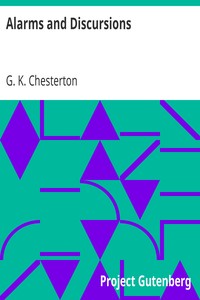| Summary |
"Alarms and Discursions" by G. K. Chesterton is a collection of essays and reflections written during the early 20th century. This work encapsulates Chesterton's wit and unique perspective on a wide array of subjects, ranging from art and society to personal musings, often interspersed with humor and philosophical insight. The pieces explore the complexities of contemporary life, examining how the ordinary and the grotesque intertwine, while also critiquing the modern world's detachment from the romantic and the ideal. The opening portion of the book begins with a contemplative piece titled "On Gargoyles," where the author reflects upon a gargoyle he finds near a disused abbey, invoking thoughts about art and its evolution from ancient to modern times. He delves into a parable about a priest and his people who, after a period of despair, learn to embrace all aspects of creation—both the beautiful and the grotesque. This allegory sets up a central theme of the collection: the acceptance of imperfection and chaos in life as necessary components of beauty, contrasting with the rigid ideals of modernism. The subsequent essays introduce satirical reflections on society, identity, and the complexity of human experience, signaling Chesterton's deep-seated belief in the power of imagination against the backdrop of rationalism. (This is an automatically generated summary.)
|

